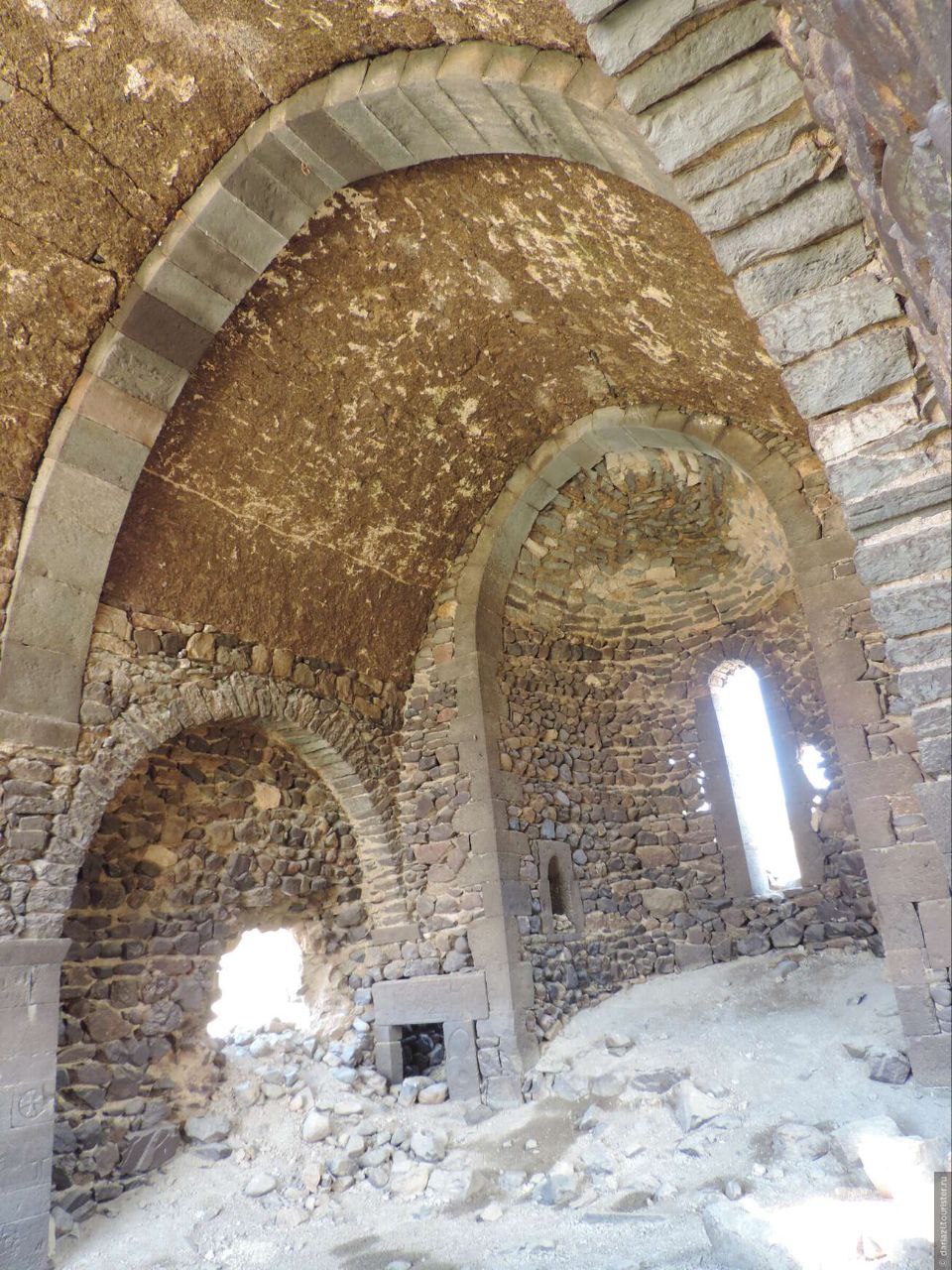The Church of St. Hripsime in the village of Tolors, Syunik region of Armenia, has been under water for about half a century. The temple, immersed in the whirlpool of the Tolor reservoir, is completely hidden under water for several months of the year, for a certain time you can swim up to it by boat, and for several days the church is within walking distance – you can even go in and pray in the ancient walls.
In ancient times, Tolors was one of the villages of the Tsghuk province of Sisakan. Archaeological excavations show that the area has been inhabited since ancient times. This is evidenced by the local ancient cemetery, which also remained under water. Residents say that often when the water level dropped, the remains of people were found here.
Why Tolors? Although there is no consensus on this issue, the most common version is that the name is based on the word “voloran” (in translation – turn, serpentine): to get to the village you have to overcome many turns.
The ancestors of the current inhabitants of the village of Tolors settled here about three hundred years ago. The village was located at the confluence of the Airi and Sisian rivers. Old-timers remember their old village and houses. They say they were dugouts, cars drove through the narrow streets, there was little arable land, about 350 hectares. However, they emphasize: these lands were surprisingly fertile, what you sow – you will get a rich harvest.
In the 1960s, the Soviet authorities decided to move the village and build a reservoir in its place. It was the decision of the government, it could not be challenged, and it never occurred to many that one could not agree with the decision of the authorities. The inhabitants were offered different places for the new village, but the Tolors people decided not to go far from their native lands and settled on a hill. First of all, they did not want to leave the graves of their ancestors, and it was necessary to keep the local church in sight, even if it was flooded.
“Before the construction of the reservoir in the Soviet years, the church served as a warehouse, mainly grain was stored here. Although this is wrong, it could have been a good reason not to demolish the church,” says a resident of the village, Hovik Badalyan.
He well remembers St. Hripsime, standing firmly on dry land. He pauses for a moment, looks towards the church, half visible from under the water, and says: “How long have we been playing in this yard?!”
At first there was no cross on the roof of the church. Unlike the building itself, it could not resist, fell.
“I’m sure the church would have been better preserved if the water level hadn’t changed. High and low tides wash away the stones and destroy the church. St. Hripsime is still standing, but already broken,” says Hovik Badalyan.
When the reservoir was already built and water had to be turned on, through the fund for the protection of monuments of Soviet Armenia and at the insistence of the villagers, the khachkars and the lintel (which is considered the passport of the church), which were in the courtyard of the church of St. Hripsime, were transferred to the village cemetery.
Judging by the lintel, the construction of the church was completed in 1861. According to the documents stored in the National Archives, the construction was started 13 years earlier by the Ter-Minasyan family, whose representatives at that time were spiritual mentors in these places. Although written confirmation was not found anywhere, the inhabitants of Tolors are sure that in the 19th century the church was not built, but rebuilt. It is based on a basilica church built many years, and maybe even centuries ago.
In the early 70s, when the church was already under water, there were several cases of drowning in the reservoir. As they say, the inhabitants of Syunik are not very religious, but they are good soldiers. However, the more religious older residents then were sure that the drowned people were not an accident, this was God’s punishment for the church that was sunk. Many old-timers still say that in the spring, when the church is completely covered with water, a strong hail falls and destroys the crop.
With the help of benefactors, a new church of the same name was built on the hill adjacent to the reservoir, not far from the sunken St. Hripsime. The new church operates today, the old church has not been forgotten.


18 thoughts on “ST. HRIPSIME”
Comments are closed.